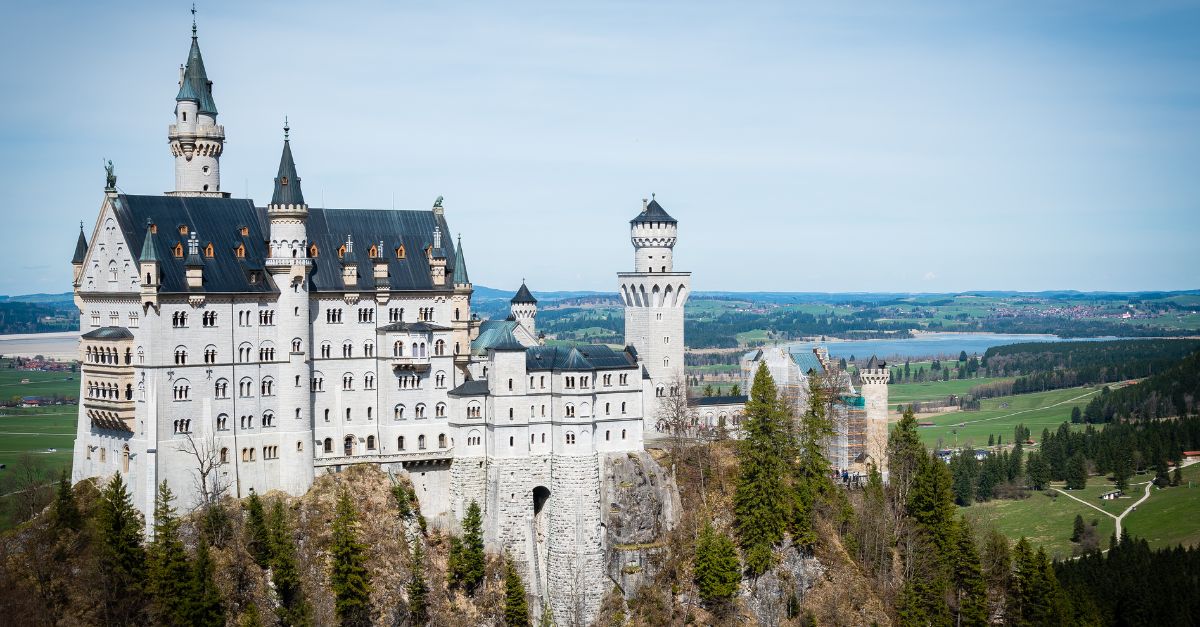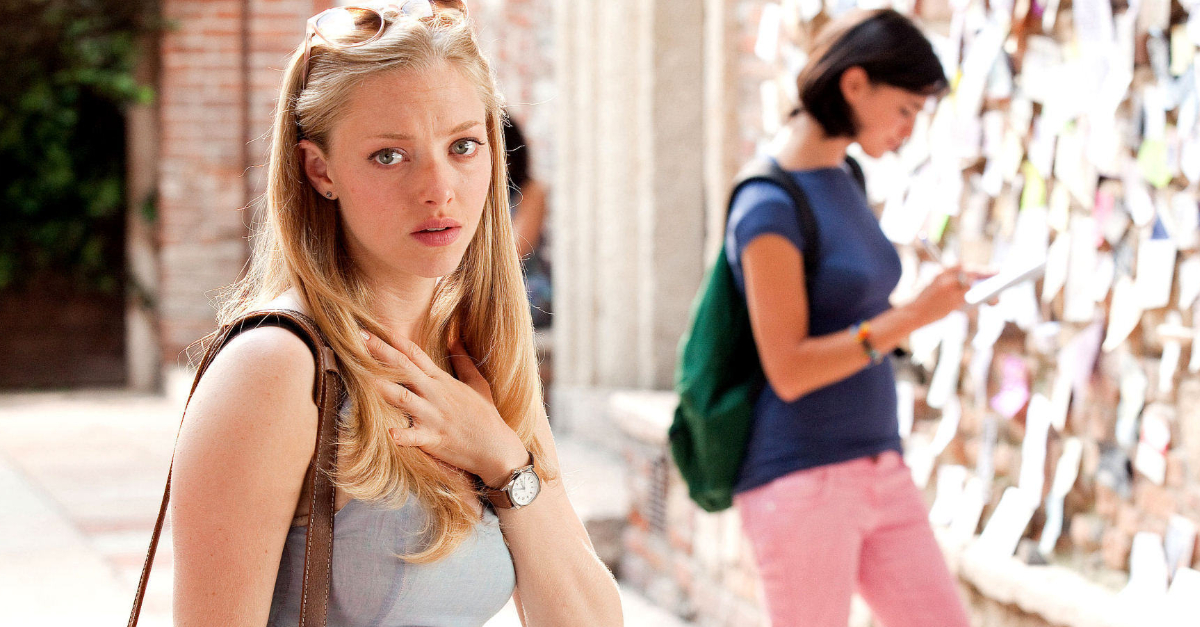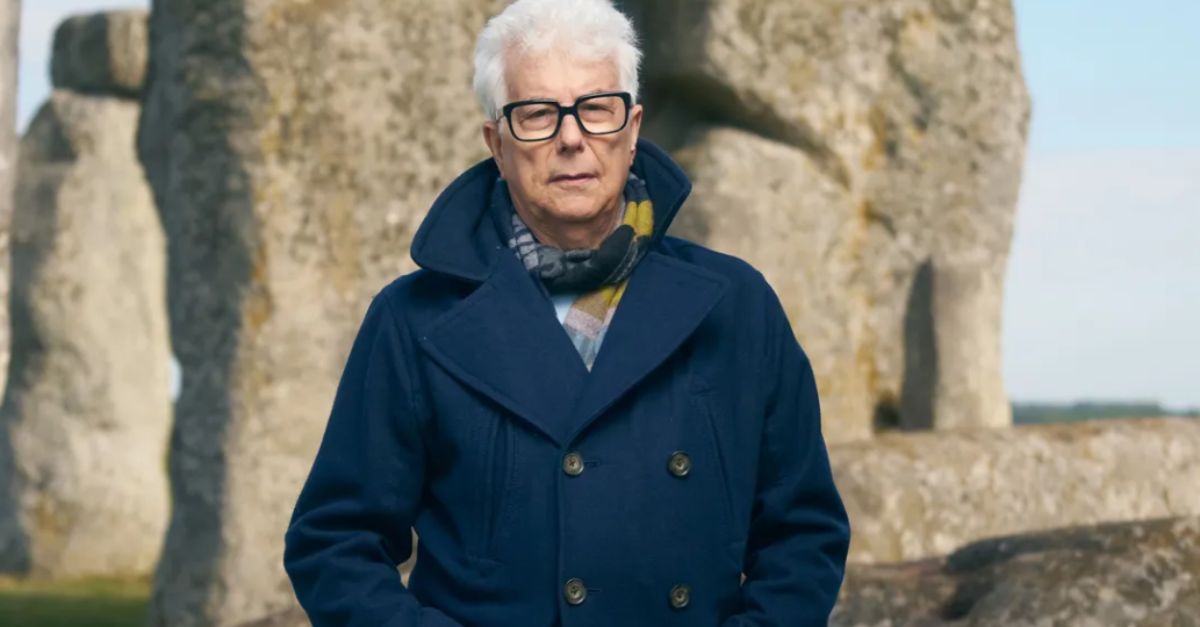A Daydream In The Ruins
Ever dreamt of living in a fairy tale? King Ludwig II sure did, and he built Neuschwanstein Castle to prove it! Welcome to the ultimate daydream that never fully unfolded.

Meet King Ludwig II
Let’s meet King Ludwig II, the “Fairy Tale King” of Bavaria! He loved art, music, and all things dreamy. Ludwig II was inspired by stories and wanted to make a special place that felt the same. His love for beauty and imagination made him want to build this castle.
 Unknown Author, Wikimedia Commons
Unknown Author, Wikimedia Commons
King Ludwig’s Dreams
King Ludwig II wanted a castle where he could pour out his imagination. He admired stories and music from that time. He dreamed of living in a beautiful castle like the ones in his favorite tales, where knights and heroes lived long ago.
 alexander palace forums, Wikimedia Commons
alexander palace forums, Wikimedia Commons
Setting The Scene
This was Ludwig II’s vision: A castle on a hill with mountains, trees, and lakes surrounding it. This was the supposed image of Neuschwanstein, the new castle. The source of inspiration was from two journeys he took in 1867, both of castle reconstructions.
 Unknown Author, Wikimedia Commons
Unknown Author, Wikimedia Commons
Richard Wagner’s Influence
Ludwig II was a big fan of the composer Richard Wagner. He loved Wagner’s music and stories, especially the operas “Tannhäuser” and “Lohengrin.” Ludwig wanted Neuschwanstein to honor Wagner and to feel like a magical place from the operas, where music and stories would meet.
 Franz Hanfstaengl, Wikimedia Commons
Franz Hanfstaengl, Wikimedia Commons
Visits To Other Castles
As a king, he had the opportunity to travel to beautiful places and visit other castles. He went to Wartburg Castle and Château de Pierrefonds. These places inspired him with their beauty and history and he applied it to his construction. Ludwig II wanted Neuschwanstein to have the same magical feeling.
 ToucanWings, CC BY-SA 3.0, Wikimedia Commons
ToucanWings, CC BY-SA 3.0, Wikimedia Commons
Architectural Style
The castle has a mix of styles. It has Roman and Gothic parts, with tall towers and pretty decorations. Ludwig II wanted it to look like an old knight’s castle but with new touches. This mix of styles made Neuschwanstein a special and beautiful place to see.
 Jeff Wilcox, CC BY 2.0, Wikimedia Commons
Jeff Wilcox, CC BY 2.0, Wikimedia Commons
Neuschwanstein
The name of the castle, Neuschwanstein, means “New Swan Stone.” This isn’t just a random name; it comes from King Ludwig II’s ideas. Swans are connected to kings and queens. They live in castles, and they personify beauty and grace, just like a fairy tale castle.
 Thomas Wolf, CC BY-SA 3.0 DE, Wikimedia Commons
Thomas Wolf, CC BY-SA 3.0 DE, Wikimedia Commons
Beginning Of The Loans
The idea of building with his own money was very humbling, but because of how ambitious Ludwig II was, things got out of hand. He planned to spend 3.2 million marks. However, as construction went on, he needed more money. To pay for the castle, he began taking out loans.
 King Ludwig II Museum, Wikimedia Commons
King Ludwig II Museum, Wikimedia Commons
Increasing Costs
As time passed, it became almost certain that he would continue down this loan route. By the end, the total cost reached about 6.2 million marks. This was nearly double what he originally planned. The King had to borrow more money to keep the construction going, which added to his worries.
 Stadt- und Staatsbibliothek, Josef Albert, Wikimedia Commons
Stadt- und Staatsbibliothek, Josef Albert, Wikimedia Commons
Growing Debt
In 1883, Ludwig owed 7 million marks. He had borrowed a lot to pay for Neuschwanstein and other projects. He was always asking for more money, which made his debt snowball. His financial situation was very serious, and he struggled to manage it well.
 Josef Albert, Wikimedia Commons
Josef Albert, Wikimedia Commons
Loans Continue To Rise
By 1884, the debt was uncontrollable, reaching 14 million marks. He was worried that he could not pay this back. At this point, everyone must have been avoiding him because he kept asking for new loans, and each time he borrowed more money, his problems got worse.
 Zenodot Verlagsgesellschaft mbH, Johannes Bernhard, Wikimedia Commons
Zenodot Verlagsgesellschaft mbH, Johannes Bernhard, Wikimedia Commons
The Fear Of Losing His Castles
The worst fear of losing everything scared him witless. So, when he realized he owed so much, he once threatened to take his own life if his creditors seized his palaces. This might have been because he cared about the palace, and you can’t blame him; he gave his whole life for this.
 Wilhelm Tauber, Wikimedia Commons
Wilhelm Tauber, Wikimedia Commons
The Final Loan Request
In early 1886, Ludwig II seeked a 6 million loan from the cabinet, which he wanted to use to pay off his debt. It was rejected. This was not surprising; he could barely track his finances. The government was worried about his financial situation and decided the loan was too risky.
 Gabriel Schachinger, Wikimedia Commons
Gabriel Schachinger, Wikimedia Commons
The Total Cost
Because of how ambitious Ludwig II was, no one would be surprised that approximately 6.2 million German gold marks, which is equivalent to around €47 million in 2021, were spent. The initial cost was 3.2 million marks; but that number quickly doubled, want to know why? Big dreams, poor management.
 Swiss Banker, Wikimedia Commons
Swiss Banker, Wikimedia Commons
Not Your Usual Blueprint
Ludwig II was very involved in every part of Neuschwanstein. He had every information scripted in his head to the point that when they were arranging things, he was just pointing at where every item should be arranged. His ideas were so clear that it felt like he was making a big stage.
 Bayerische Verwaltung der staatlichen Schlösser, Christian Jank, Wikimedia Commons
Bayerische Verwaltung der staatlichen Schlösser, Christian Jank, Wikimedia Commons
Materials
To achieve this grand design that Ludwig II had planned, they went all out, like all over to source for material. White limestone for the facades was obtained nearby, while sandstone for the portals and bay windows all the way from Schlaitdorf in Württemberg and Marble from Untersberg.
Change Of Ideas
The idea for Neuschwanstein was great, but Ludwig II sometimes over worked those who labored hard. His workers would especially work extra when Ludwig II was in a hurry to meet deadlines. The workers would also work extra hours whenever he decided to make urgent changes.
 Cezary Piwowarski, CC BY-SA 4.0, Wikimedia Commons
Cezary Piwowarski, CC BY-SA 4.0, Wikimedia Commons
Day And Night
During these times, the workers often worked day and night to meet King Ludwig II’s tight deadlines. At busy times, up to 300 workers were on-site, using oil lamps to keep working through the night, making sure the King’s big project moved along quickly.
 AnirbanChakraborty, CC BY-SA 4.0, Wikimedia Commons
AnirbanChakraborty, CC BY-SA 4.0, Wikimedia Commons
A Marvel Of Engineering
Despite the pressure, building Neuschwanstein had major engineering tools on site. Two big cranes helped with the work. One crane lifted things from the ground, and the other worked close by. The teamwork made it possible. It’s amazing to think about all the hard work that made this dream come true.
Quantity Of Materials
The entire construction used 465 tons of Salzburg marble, 1,550 tons of sandstone, 400,000 bricks, and 2,050 cubic meters of wood for scaffolding. This huge amount of materials shows how complicated it was to make King Ludwig II’s dream come true.
 Knopf piano, Wikimedia Commons
Knopf piano, Wikimedia Commons
Exterior And Interior
Outside of Neuschwanstein Castle, there is a mix of Roman and Gothic styles. It features simple shapes, tall towers, and very pretty details that make it look beautiful. Inside, there is the Throne Hall, which needed a strong steel frame and looked like a stage meant for King Ludwig II’s home.
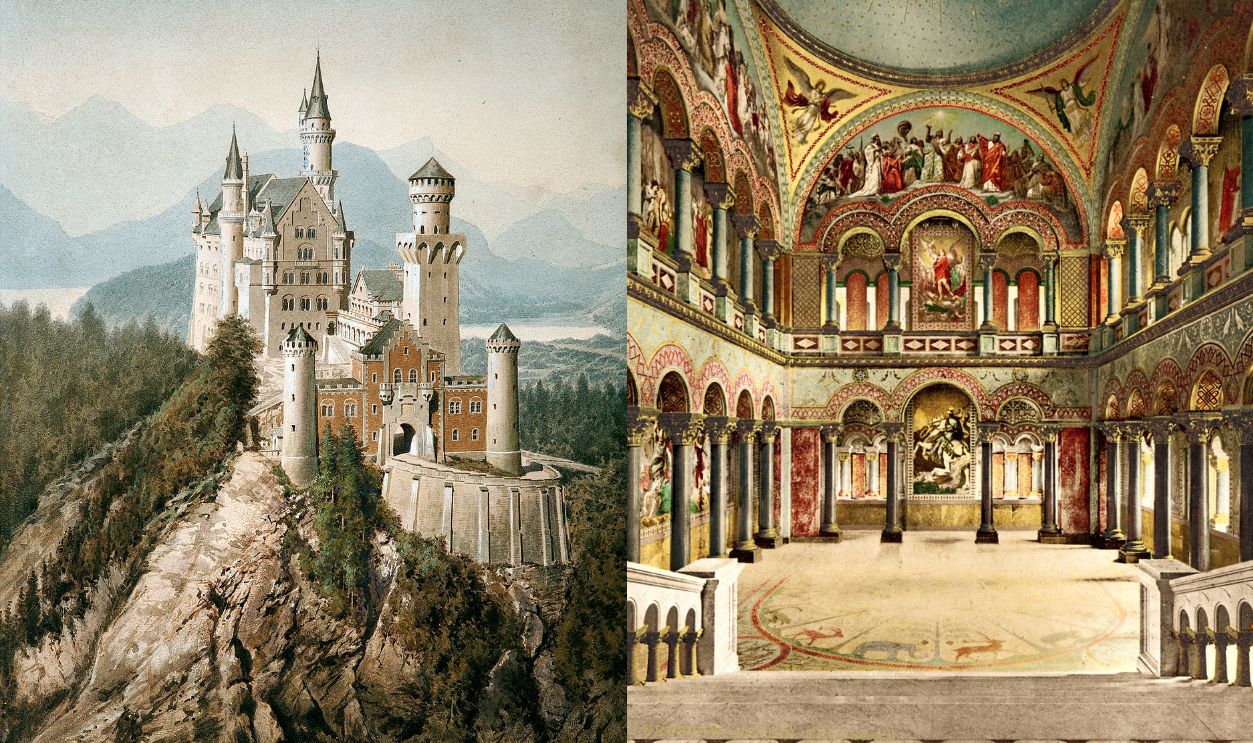 Photochrom from Photoglob AG Zürich, Josef Albert and Adolf Hitler, Wikimedia Commons
Photochrom from Photoglob AG Zürich, Josef Albert and Adolf Hitler, Wikimedia Commons
Completed Rooms
Even though many wanted to see the castle finished, only a few rooms were finished by the time King Ludwig II had passed on. The castle had about 15 completed rooms, while many others were still being built or were never done. Possible reasons? Maybe a lack of funds.
 Photochrom from Photoglob AG Zürich, Josef Albert, Wikimedia Commons
Photochrom from Photoglob AG Zürich, Josef Albert, Wikimedia Commons
Special Rooms
Neuschwanstein Castle has some special rooms for special people, occasions, or events. The Throne Hall was the biggest room, decorated beautifully but only used for ceremonies. The Great Hall was designed for gatherings with guests and has nice woodwork. There is also the Singing Hall, where music performances can happen.
 Verlag Franz Hanfstaengl, 1900, Wikimedia Commons
Verlag Franz Hanfstaengl, 1900, Wikimedia Commons
Deposition And Loss
In June 1886, the government decided to remove Ludwig II from power while he was at Neuschwanstein. He was facing financial troubles and was unable to pay his debts. This situation led to his downfall, making it hard for him to keep his beloved castles and his throne.
 ARTQUID, Ferdinand James, Wikimedia Commons
ARTQUID, Ferdinand James, Wikimedia Commons
King Ludwig’s Trouble
This was the sign that he might not come out of this in one piece. In June, the Bavarian government decided to remove King Ludwig II from being King. On June 9, they said he could not rule anymore. Ludwig II was worried that the castle would be taken away from him.
 Heinrich Georg Dendl, Wikimedia Commons
Heinrich Georg Dendl, Wikimedia Commons
A Plan To Protect Himself
On June 11, Ludwig II was confronted by government officials who had come to stripe him from his glory. He called the local law enforcers and fire brigades for help. He wanted to stay safe from the people trying to remove him. It was evident Ludwig II was very scared and wanted to protect himself.
 Unknown Author, Wikimedia Commons
Unknown Author, Wikimedia Commons
Threat Of Ending His Own Life
Ludwig was very scared about losing his castles. He loved his homes and wanted to keep them safe. Remember the ultimatum to “off” himself when creditors took his palaces? This was the exact reason why. His debts were high, and he had no way to pay them. This King was truly desperate.
 Carsten Steger, CC BY-SA 4.0, Wikimedia Commons
Carsten Steger, CC BY-SA 4.0, Wikimedia Commons
Mysterious Passing
The next day, another group came to take Ludwig II away, and they did. He had to leave the castle that night and was watched by a doctor. Sadly, on June 13, both Ludwig II and the doctor were found dead in Lake Starnberg. Their departures were very strange.
 Carsten Steger, CC BY-SA 4.0, Wikimedia Commons
Carsten Steger, CC BY-SA 4.0, Wikimedia Commons
King Ludwig’s Passing
King Ludwig II passed on on June 13, 1886. He was found floating lifeless on Lake Starnberg. It’s alleged that Ludwig II had gone out with his doctor for a walk. Soon after, both were found lifeless in the water. The cause of dying was a mystery, and many people were shocked by it.
 Www at German Wikipedia., Wikimedia Commons
Www at German Wikipedia., Wikimedia Commons
A Castle That Was Never Finished
As with every fairytale, reality always wins. This has nothing to do with slippers or some goblet. King Ludwig II departed in 1886, and some rooms were left undone. It is very sad to think that some of his dreams were not completed. But the castle still personified his vision.
 Lokilech, CC BY-SA 3.0, Wikimedia Commons
Lokilech, CC BY-SA 3.0, Wikimedia Commons
Opening The Doors To The Public
Judging from how personal this project was for Ludwig II, one might have thought it couldn’t be made public. But alas, just weeks after Ludwig’s passing, Neuschwanstein became a public space open to everyone. As one would expect, many people wanted to have a view of this castle.
 Hedwig Storch, CC BY-SA 3.0, Wikimedia Commons
Hedwig Storch, CC BY-SA 3.0, Wikimedia Commons
Work Stopped
The construction of the castle was stopped after he passed—even with the incomplete rooms. This meant that a lot of the King’s ideas would never see the light of day. Without him, the workers did not know what to do. The palace remained as it was, with some parts still waiting to be finished.
 Oliver-Bonjoch, CC BY-SA 3.0, Wikimedia Commons
Oliver-Bonjoch, CC BY-SA 3.0, Wikimedia Commons
Changing Ownership
The castle became the property of the Bavarian government. They took care of the castle and opened it to visitors, and it also became part of Bavaria’s history. Over time, it turned into a symbol of the King’s dreams and the beauty of the environment around it.
 Diego Delso, CC BY-SA 3.0, Wikimedia Commons
Diego Delso, CC BY-SA 3.0, Wikimedia Commons
Preservation Efforts
As time went on, the safety of the palace became a topic of discussion. The government worked to protect the castle and fix any damages. They wanted to ensure future generations could enjoy its beauty. Neuschwanstein became a treasured part of Germany’s culture and history for everyone to see.
Neuschwanstein In WWII
During WWII, Neuschwanstein Castle was a safe place for valuable art. It was also one of many places the Nazis used to keep many pieces of art that were talking from other places. The castle housed many treasures that have become very important.
Return Of The Art
After the WWII conflict ended, the hidden art was given back to the people who owned it. Many important pieces were saved because the castle kept them safe. So, besides being a magical castle, it was also a storage facility for pieces of art.
 Valerio Bruscianelli, CC BY-SA 4.0, Wikimedia Commons
Valerio Bruscianelli, CC BY-SA 4.0, Wikimedia Commons
A Symbol Of Resilience
The castle became a symbol of hope for many people. Even after facing danger, it remained a beautiful place that attracted visitors from all over the world. Its history during this time added to the story of the King and his dream to give life to his imagination.
Tourism
Neuschwanstein is one of the most popular places for tourists in Europe with nearly 1.5 million visitors every year. The castle’s amazing views and storybook design bring people from all over the world. Many visitors come to enjoy the lovely scenery and the rich history.
Visitor Experience
Tourists must join a 35-minute guided tour to see inside Neuschwanstein Castle. However, no photography is allowed inside. In peak season, up to 6,000 visitors come daily. Guests without tickets can still walk around the castle grounds but cannot enter the building without a ticket.
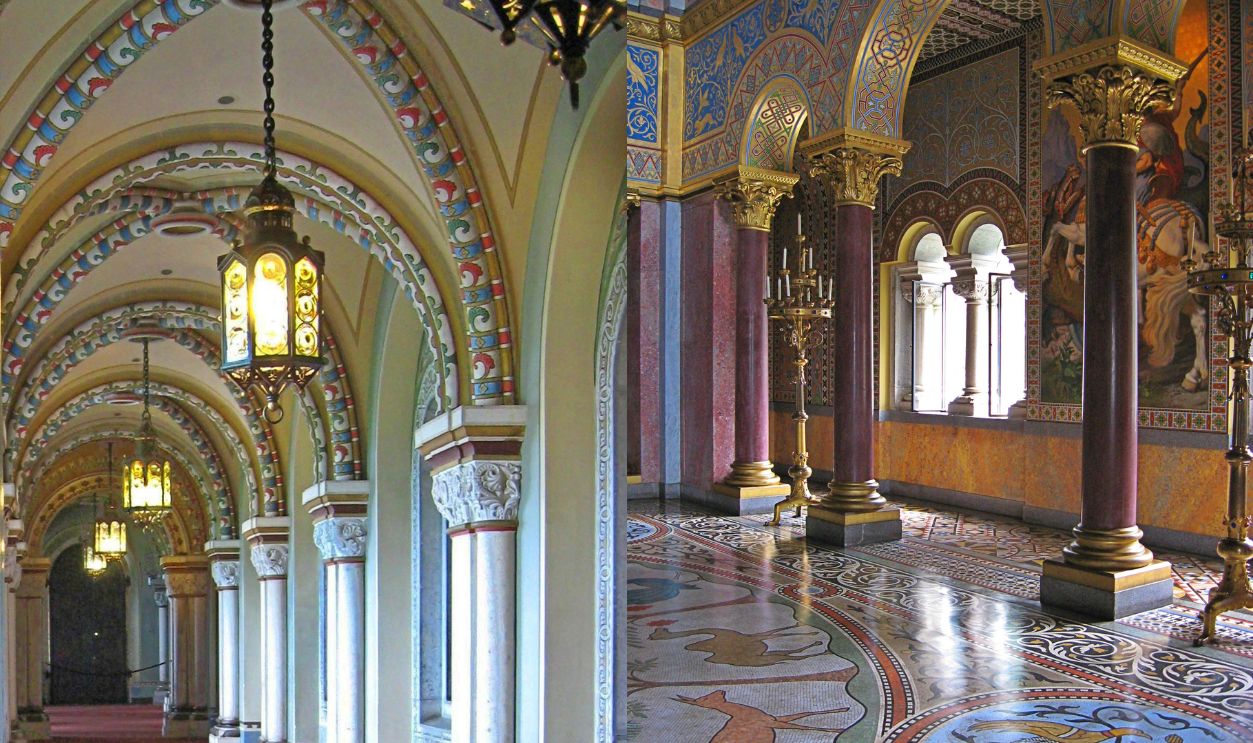 Lokilech, CC BY-SA 3.0, Wikimedia Commons
Lokilech, CC BY-SA 3.0, Wikimedia Commons
Economic Impact
For tourism, the castle generates a lot of money. In 2004, the amount of money made was about €6.5 million. The castle helps support local businesses, hotels, and restaurants. It was still a major source of income for the area and the Bavarian royal family before WWI.
Management And Preservation
Today, the Bavarian Palace Department manages Neuschwanstein. They work to preserve the castle and keep it safe for visitors to come in the coming years. The aim is to maintain its beauty and history while accommodating the large number of tourists.
Cultural Importance
Neuschwanstein has appeared in many films and has inspired places like Disneyland. Yup, read right, Disneyland. The castle connects visitors to history and culture. It is also part of a list of UNESCO World Heritage Sites, which highlights its global significance.
 RAGB~commonswiki, Wikimedia Commons
RAGB~commonswiki, Wikimedia Commons
Almost A Wonder Of The World
Chosen as one of the best places in the world in 2007, this castle was in the running for the New Seven Wonders of the World. Even though it did not win, being chosen was very special. This tells how much people love the castle’s beauty and story.
 Sheralyn M, UK, Viator.com, Flickr
Sheralyn M, UK, Viator.com, Flickr
The Mystery
There are many theories about how King Ludwig II kicked the bucket. Some speculate it was foul play, while others believe he drowned. His passing remains a mystery even today. Many people still talk about the strange circumstances surrounding his passing and what really happened that night by the lake.
 The Project Gutenberg EBook of Richard Wagner, by John F. Runciman, Wikimedia Commons
The Project Gutenberg EBook of Richard Wagner, by John F. Runciman, Wikimedia Commons

